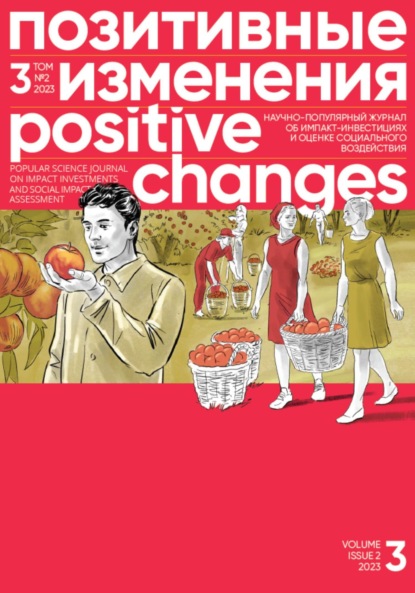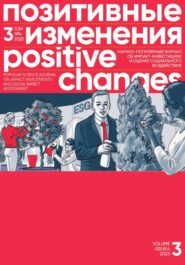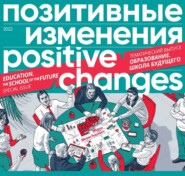По всем вопросам обращайтесь на: info@litportal.ru
(©) 2003-2024.
✖
Позитивные изменения. Том 3, № 2 (2023). Positive changes. Volume 3, Issue 2 (2023)
Настройки чтения
Размер шрифта
Высота строк
Поля
The application of psychosemantics in cinema assumes a crucial role as it uncovers functioning of individual and collective systems of meanings portrayed in cinematic images.
ANALYZING SPECTATORS’ ATTRIBUTION OF THE MOTIVES FOR CHARACTERS’ ACTIONS
The researchers carefully selected specific actions performed by the characters as behavioral indicators for motive attribution. For each character, they chose the actions and deeds that vividly characterized them. After viewing the movie, the respondents were presented with a list of 54 motives, including love, desire for approval, and acting out of a sense of duty. They were asked to rate the extent to which each motive from the provided list could serve as a reason for a particular action, on a scale of 1 through 6.
It is widely acknowledged that actions can be driven by multiple motives of varying significance. To capture this complexity, the respondents assigned points to complete a comprehensive matrix attributing motives to actions.
By employing factor analysis on the collected data, distinct motivational patterns emerged for each character. The strength of each motive cluster represents the prominence of specific groups of motives in shaping the characters’ behavior, as perceived by the participants. It is important to note that not all listed motives necessarily underpin the behavior of every character. For instance, in the case of Tolstoy, motives such as “material interest,” “career aspirations,” and “thirst for knowledge” do not align with his behavioral motives (Petrenko, 2014).
Equally promising are the avenues related to assessing the impact of cinematic works.
THE VAST FRONTIER OF PSYCHOSEMANTICS IN CINEMA: EXPLORING BOUNDLESS POSSIBILITIES
A comprehensive review of scientific literature from the past decade reveals the extensive utilization of psychosemantic analysis in the realm of film studies. This approach has been applied to various aspects of cinematography, ranging from the examination of texts produced by diverse linguocultural communities (Vinnikova, 2008) within an intercultural context (Baranskaya, Vershinina, 2010), to the exploration of cinema as a manifestation of national consciousness and an integral part of national culture. Additionally, studies have focused on determining the subjective appeal of positive and negative characters (Korobova et al., 2018; Korobova, 2019), interpreting characters’ behavior during conflicts (Markina, 2010; Sobkin et al., 2007; Kirakosyan, 2007), investigating media violence and its connection to viewers’ personal characteristics (Dorfman & Zubakin, 2013), as well as exploring the viewers’ ego-identity (Askerova, 2017). These examples represent only a fraction of the wide-ranging topics that have been explored through the lens of psychosemantics in recent years.
Equally promising are the avenues related to assessing the impact of cinematic works. The sophisticated and remarkably precise tool of psychosemantics enables the reconstruction of individual meaning systems and provides a nuanced description of the viewing experience, surpassing the capabilities of traditional survey methods, including in-depth interviews.
These endeavors signify that Viktor Petrenko, along with his colleagues and collaborators, have an abundance of research ahead and numerous prospects for new discoveries.
Lastly, we would like to share a personal anecdote. On one occasion, Viktor Petrenko delivered a lecture to students at a renowned South Korean university as a visiting professor. The lecture was delivered in Russian, with Natalia Gladkikh, who taught a course on advertising effectiveness evaluation, translating it into English. Following the class, Professor Petrenko presented some of his books to the most enthusiastic students, one of whom eagerly sought an autograph. Upon receiving the book adorned with the coveted signature, the student exclaimed, “I am destined for prosperity! I firmly believe Professor Petrenko will win a Nobel Prize soon, and I will have a book bearing his autograph.”
Once again, this anecdote underscores the profound impact of Petrenko’s persona and the psychosemantic methodology he has developed. They transcend linguistic and cultural barriers, resonating with anyone willing to wield the tools of psychosemantics.
REFERENCES
1. Askerova, A. T. (2017). Psychosemantics of “Harry Potter” characters and the peculiarity of the ego-identity of the audience. In Psychology in a Changing World: Problems, Hypotheses, and Research (pp. 155–162).
2. Baranskaya, L. T, & Vershinina, T. S. (2010). Psychosemantics of Heroism in Historical and Linguistic Intercultural Context. Ural State University News. Series 1. Issues of Education, Science, and Culture, 6 (85).
3. Vinnikova, T. A. (2008). Peculiarities of perception of a film by a foreign-speaking audience. Linguistic Reality of Man and Ethnicity, (14), 34–39.
4. Gaivoronskaya, A. A. (2018). Psychosemantic approach to the phenomenon of extremism: theoretical justification. Psychology of Cognitive Processes, (7), 35–42.
5. Gladkikh, N.Yu. (2017). The use of psychosemantics methods in research on the effectiveness of social advertising. In Perspectives on Psychological Science and Practice (pp. 210–213).
6. Gladkikh, N.Yu. & Vainer, V. L. (2018). Evaluating the effectiveness of social advertising. Methodological Guide.
7. Dambaeva, E. A. (2017). Psychosemantic methods for studying gender stereotypes. In Theory and Practice of Teaching Oriental Studies (pp. 113–117).
8. Dorfman, L.Ya. & Zubakin, M. V. (2013). Individual’s perception of feature films with scenes of violence. Psychology. Psychophysiology, 6(2), 13–24.
9. Kirakosyan, A.Kh. (2007). Psychosemantic analysis of how teenagers perceive cinema. Retrieved from: http://psy.msu.ru/science/conference/lomonosov/2007/thesis/Kirakosyan_ AH.pdf.(accessed: 05.06.2023).
10. Korobova, S.Yu. (2019). The impact of cult films on the process of identifying with positive and negative characters. In Social Psychology and Society: History and Modernity (pp. 43–46).
11. Korobova, S.Yu., Dmitrieva, Yu.A. & Askerova, A. T. (2018). Psychosemantic analysis of the appeal of characters in a cult film. Psychology. Psychophysiology, 11(4), 31–38. https://doi.org/10.14529/psy180404
12. Kshenina, N. N. (2006). Word and Image in Advertising Text: Psychosemantic Analysis. Abstract of Thesis for Candidate of Philological Sciences. Moscow.
13. Kyshtimova, I. M. (2014). Psychosemantic analysis of the influence of precedent texts in advertising, with a focus on classical music as an example. Bulletin of the Moscow State Regional University. Series Psychological Science, (2), 25–35.
14. Markina, O. S. (2010). Socio-psychological aspects of perceiving and comprehending a feature film, illustrated by the example of R. Bykov’s Scarecrow: Abstract of Thesis for Candidate of Psychology, 19(05)
15. Mitina, O. V. & Petrenko, V. F. (2018). Utilizing the psychosemantic approach of the “Image of a Political Leader” method to explore and compare the perception of politicians’ images: an experiential perspective. Yaroslavsky Pedagogichesky Vestnik, (5), 256–269.
16. Petrenko, V. F. (1982). Experimental Psychosemantics: Studies on Individual Consciousness. Voprosy Psychologii, (5), p. 23–35.
17. Petrenko, V. F. (2014). Psychosemantics of Art.
18. Petrenko, V. F. & Mitina, O. V. (2017). The Psychosemantic Approach to the Reconstruction of Political Mentality: Methods and Examples of Research. The Russian Academy of Sciences Newsletter, 87(1), 50–64.
19. Petrenko V. F. & Sapsoleva O. N. (2005). Psychosemantic Analysis of the Feature Film The Barber of Siberia. Voprosy Psychologii, (1), p. 56–72.
20. Petrenko, V. F. & Suprun, A. P. (2017). Methodological intersections of psychosemantics of consciousness and quantum physics.
21. Petrenko, V. F., Gladkikh, N.Yu. & Mitina, O. V. (2016). Psychosemantic Analysis of the Perception of Political Leaders (Using a Sample of Students from South Korea). Bulletin of the Moscow University. Series 14. Psychology, (2), 64–87.
22. Petrenko, V. F., Kucherenko, V. V. & Vyalba, A. P. (2006). Examining the psychosemantic aspects of altered states of consciousness in the context of hypnotherapy for alcoholism. Journal of Psychology, 27(5), 16.
23. Petrenko V. F., Suprun A. P. & Kodirova Sh.A. (2020). Psychosemantic Analysis of Akira Kurosawa’s Feature Film Rashomon. Psychology. Higher School of Economics Journal, 17(4), 737–756.
24. Sobkin, V. S. & Markina, O. S. (2007). The attribution of motivations to film characters in the movie “Scarecrow” and its implications on the concept of self-identity. Bulletin of Practical Educational Psychology, 4(3), 49–58.
25. Strelkova, N. V. (2009). The significance of cinema and the utilization of the cinemalogy approach in fostering the personal and professional enculturation of students. “Media Education and Media Competence.” All-Russian Scientific School for Youth, 185.
26. Teplova, E. G., Lityagina, E. V. & Serebryakova, M. E. (2016). The psychosemantic analysis of the perception of visual images in advertising. Psychology/E. G. Teplova.
27. Chebakova, Yu.V. (2010). Psychosemantic analysis of gender identity. In Experimental Psychology in Russia: Traditions and Prospects.
28. Yanovsky, M. I. (2010). The challenge of examining cinematography within the field of psychology. Journal of Psychology, 31(5), 79–88.
29. Yanshin, P. V. (2006). Psychosemantics of Color.
Экспертные мнения / Expert Opinions
Импакт идет в кино. Оценка эффективности инвестиций в российский кинематограф
На отечественное кинопроизводство выделяются большие объемы грантов и субсидий – возвратных и нет. Финансирование российского кино – как из государственных, так и из частных источников – стабильно увеличивается, данные о победителях и суммах, охвате и кассовых сборах выкладываются в открытом доступе, растут прозрачность и требования к отчетности, вошли в практику открытые питчинги сценариев. Но в то же самое время в том же самом инфополе начинают появляться озвученные экспертами мысли, что эффективность – это не всегда про цифры. Так про что же?
Татьяна Печегина
Журналист
ВПЕЧАТЛЯЮЩИЕ ЦИФРЫ
Для развития отечественной кинематографии в бюджете на 2023–2025 годы учтены дополнительные 5,5 млрд рублей ежегодно, с их учетом общая сумма поддержки составит теперь около 12 млрд рублей в год[3 - ТАСС. (2022). В России на развитие кино в 2023–2025 годах выделят около 12 млрд рублей ежегодно. Режим доступа: https://tass.ru/ekonomika/16528807. (дата доступа: 17.05.2023).]. Расширяется система поддержки региональных кинопроизводителей – программа рибейтов (налоговых возвратов), позволяющая компенсировать часть затрат по съемкам фильмов и сериалов из регионального бюджета. Например, в Санкт-Петербурге правительство выделило 200 млн рублей на субсидии организациям кинематографии для съемок национальных фильмов на территории города в 2023 году[4 - Гарант. ру. (2023). Постановление Правительства Санкт-Петербурга от 22 марта 2023 г. № 205 «О порядке предоставления в 2023 году субсидий организациям кинематографии». Режим доступа: https://www.garant.ru/hotlaw/peter/1617359/. (дата доступа: 17.05.2023).]. По информации Фонда кино, отечественные фильмы по итогам 2022 года впервые обеспечили больше половины киносборов[5 - Стогова, Е. (2023). Российские фильмы впервые собрали больше половины всей кассы года. 25.01.2023. РБК. Режим доступа: https://www.rbc.ru/technology_and_media/25/01/2023/63cfbcce9a79 47e00227af1b. (дата доступа: 17.05.2023).]. Правда, нужно учитывать, что ситуация 2020–2022 гг. была в целом нетривиальной в мировых масштабах, а в 2023 году из РФ ушел голливудский контент и довольно серьезно упали сборы. Но, тем не менее, на государственном уровне предпринимаются серьезные попытки исправить ситуацию, вернув ее как минимум на уровень допандемийного времени.
Увеличение госфинансирования отечественного кинопроизводства и постепенное движение к росту кассовых сборов именно российских фильмов, безусловно, впечатляют.














